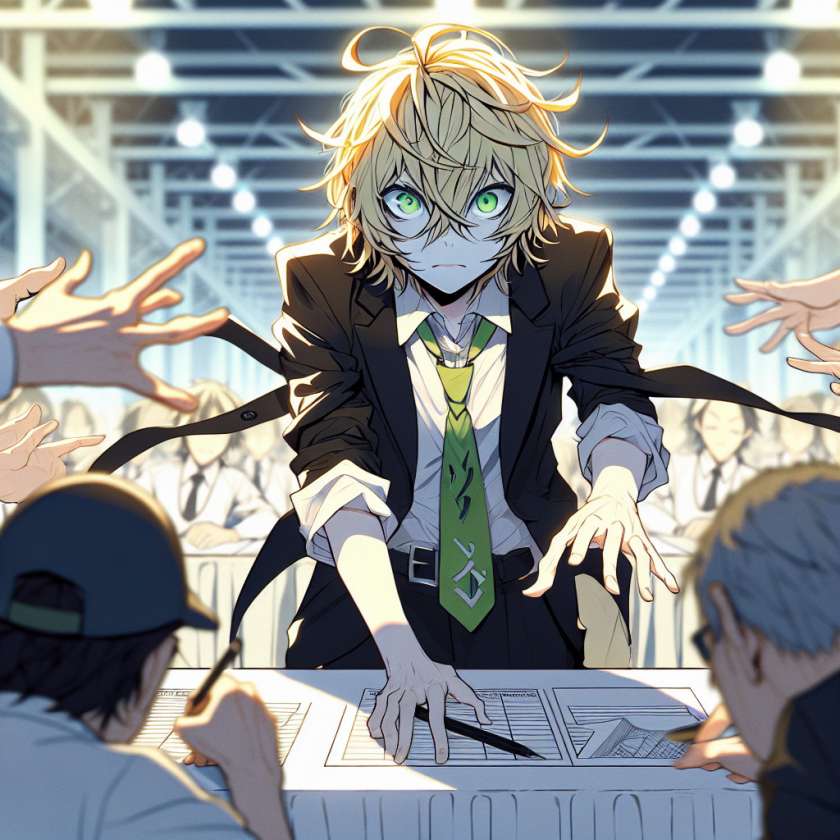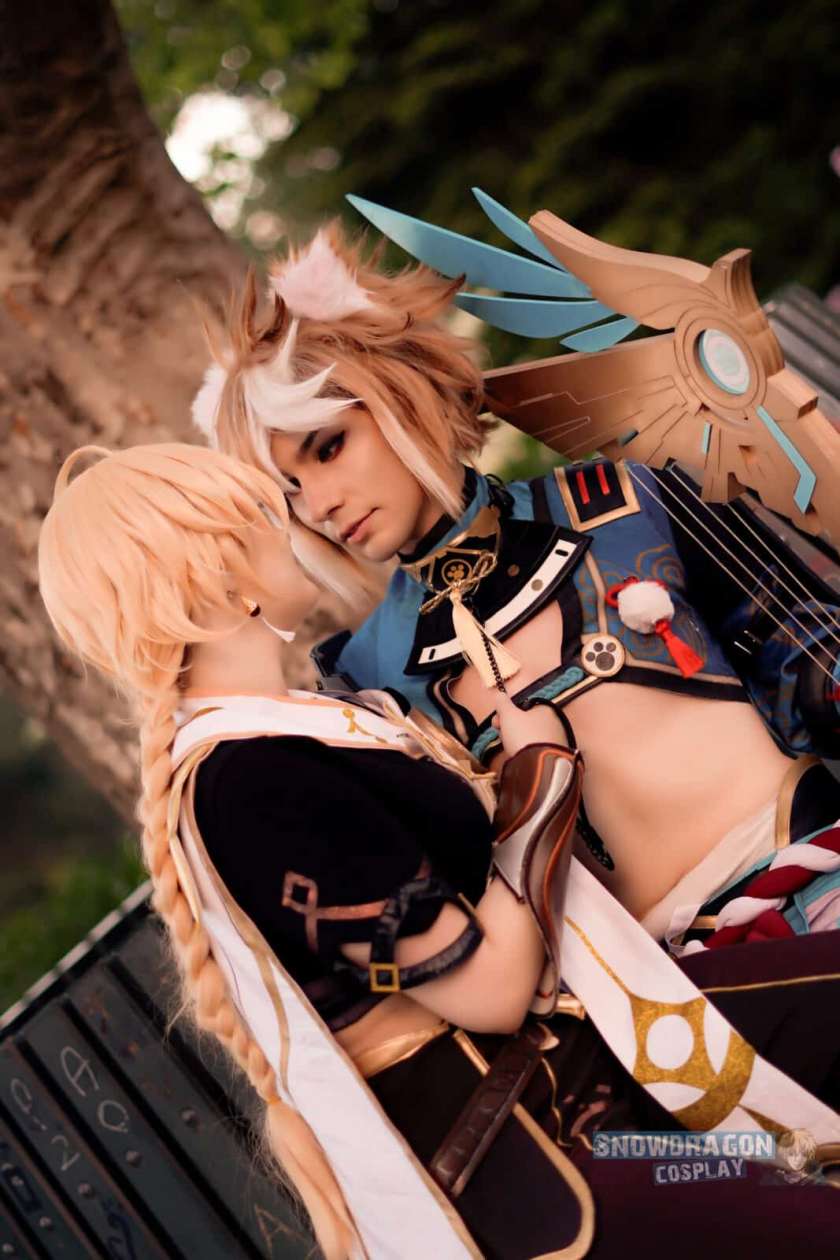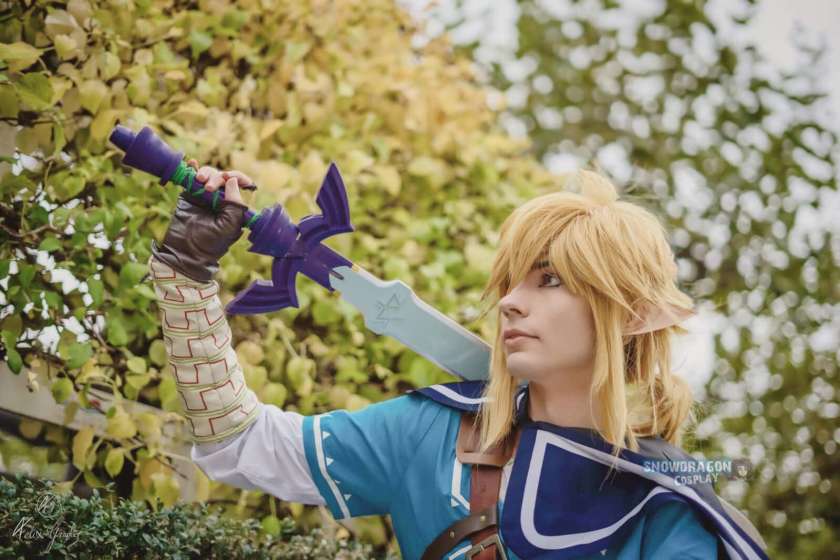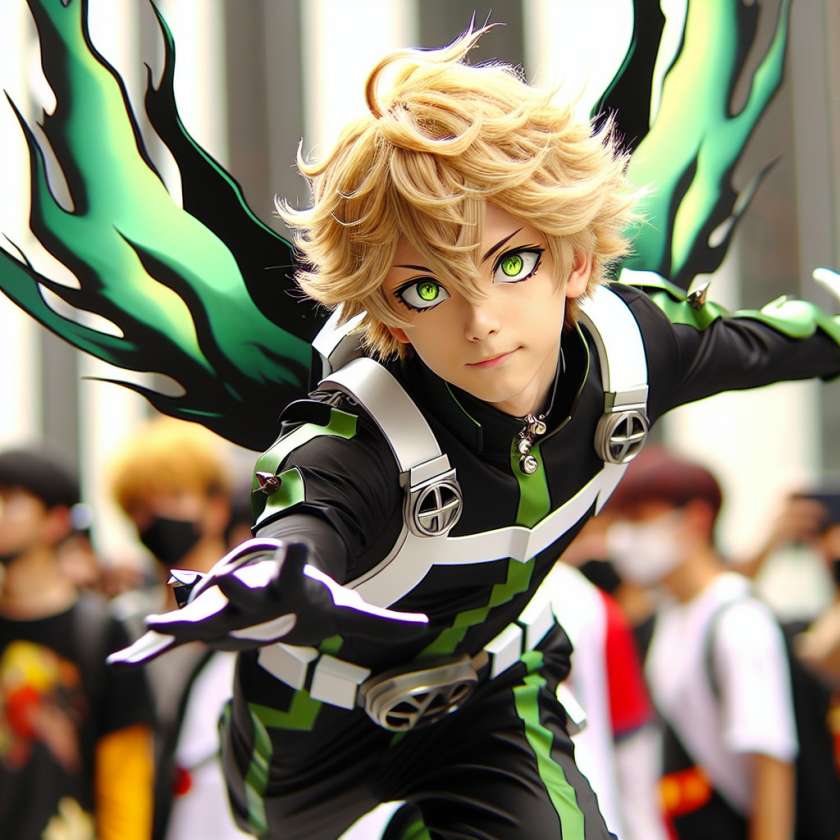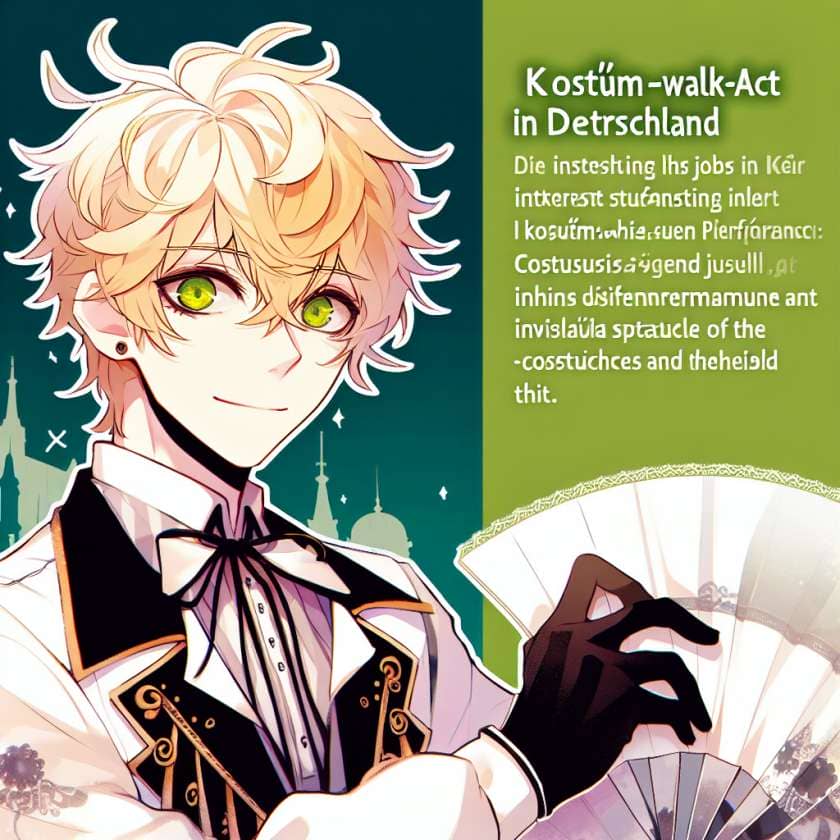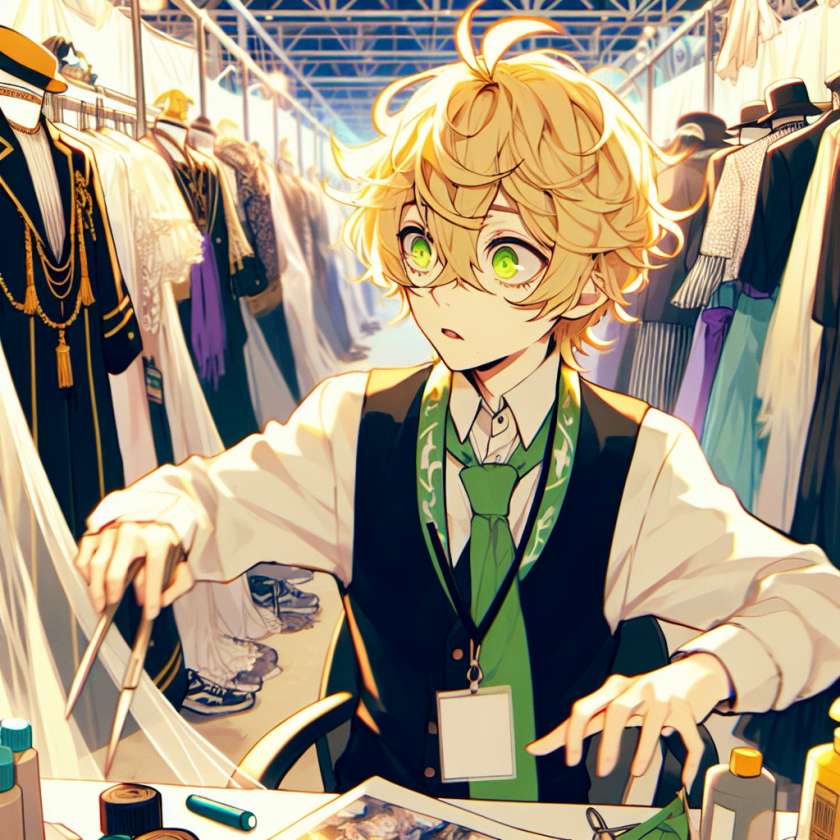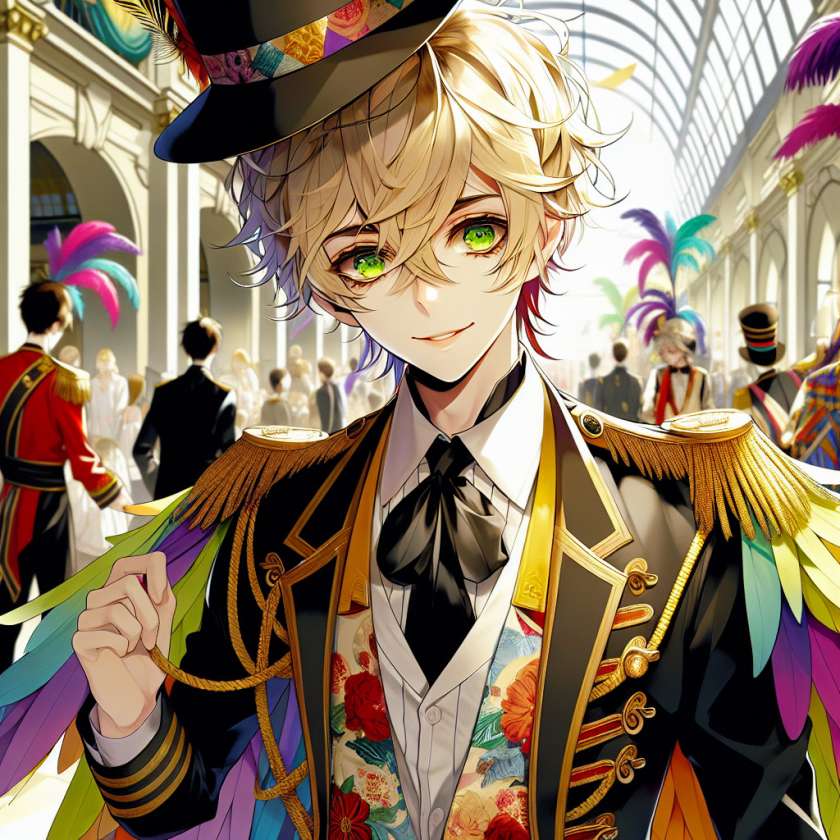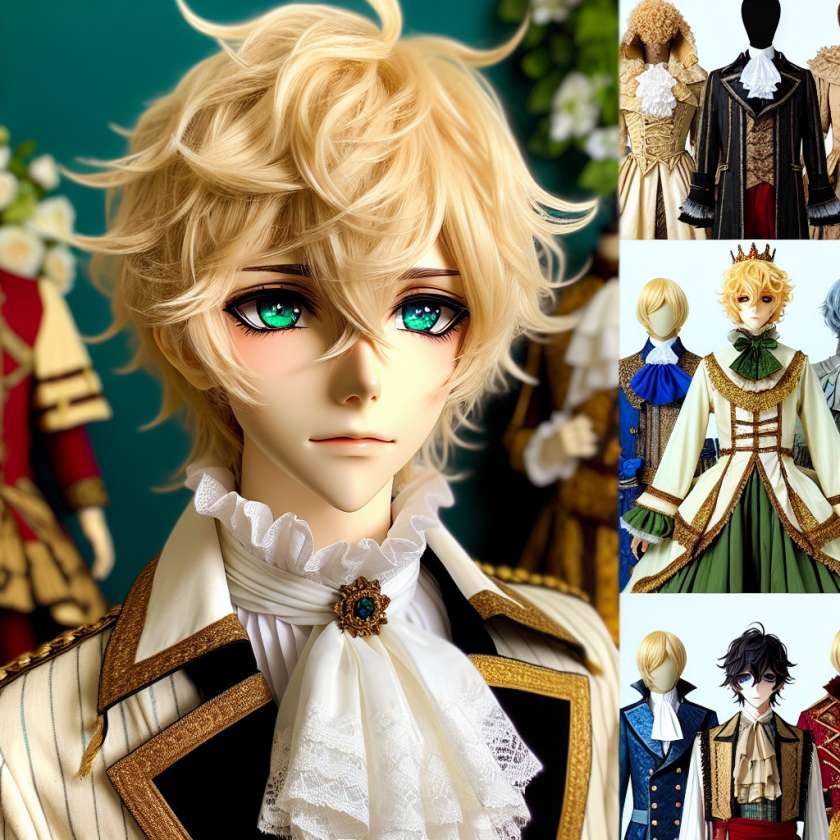
[Sassy_Follow_Icons]
1. What is Shibari and how does it relate to storytelling in cosplay?
Shibari, also known as Japanese rope bondage, is an ancient art form that involves intricate patterns of ropes being tied around the body to create visually stunning designs. While its origins lie in the realm of BDSM, Shibari has evolved into a form of artistic expression that goes beyond mere sexual connotations. It has found its way into the world of cosplay as a powerful tool for storytelling.
As a professional cosplayer myself, I have always been fascinated by the ability of costumes and props to bring characters to life. However, I often felt that something was missing in my portrayals – a deeper connection between the character and their story. That’s when I discovered Shibari and its potential to enhance character narratives in cosplay.
By incorporating Shibari techniques into my cosplays, I am able to visually represent the emotional journey and struggles of a character through the placement and tension of the ropes. The ropes become symbolic representations of the character’s inner turmoil or external challenges they face. It adds an extra layer of complexity and intrigue to my performances, captivating both the audience and myself.
[publishpress_authors_box layout="ppma_boxes_890427"]
Benefits:
– Creates visually stunning designs on the body
– Adds depth and complexity to character narratives
– Enhances emotional connection between cosplayer and audience
Personal Story:
I remember vividly when I first experimented with Shibari in one of my cosplays. I was portraying a character who had endured great physical and emotional pain throughout their story. As I carefully tied each knot, creating intricate patterns across my body, I could feel myself becoming more connected to the character’s experiences.
During my performance at a convention, I noticed how intrigued and captivated the audience was by not only my costume but also by the way the ropes accentuated certain aspects of the character’s journey. The ropes represented the character’s struggles and the strength they found within themselves to overcome adversity.
Since then, I have continued to explore the possibilities of Shibari in my cosplays, constantly pushing boundaries and finding new ways to enhance character narratives through rope techniques. It has become a signature element of my cosplay style, allowing me to create visually stunning and emotionally impactful performances that leave a lasting impression on both myself and those who witness them.
2. Enhancing character narratives in cosplay through rope techniques.
Understanding the art of Shibari
Shibari, a form of Japanese rope bondage, has gained popularity in the world of cosplay as a means to enhance character narratives. This ancient art form involves intricate knots and patterns that can be used to create visually stunning displays on the human body. By incorporating Shibari techniques into their cosplays, cosplayers can add an element of authenticity and depth to their character portrayals.
The versatility of Shibari in storytelling
One of the main benefits of using Shibari in cosplay is its versatility. The different types of knots and patterns allow cosplayers to convey various emotions and themes within their character narratives. For example, tight and restrictive ties can symbolize a character’s internal struggles or emotional turmoil, while more open and flowing designs can represent freedom or liberation. This flexibility makes Shibari an excellent tool for cosplayers looking to explore complex storylines and add layers of meaning to their characters.
– List:
1. Tight and restrictive ties
2. Open and flowing designs
Creating visual impact
Another advantage of incorporating Shibari into cosplay is its visual aesthetic. The intricate patterns created by the ropes can add a visually striking element to a costume, elevating it from a simple recreation to a work of art. The contrast between the ropes and the cosplayer’s skin or costume fabric can create a captivating visual impact that draws attention and leaves a lasting impression on viewers.
– List:
1. Intricate patterns
2. Visual contrast with skin or costume fabric
Overall, utilizing Shibari techniques in cosplay allows cosplayers to enhance their character narratives by adding authenticity, depth, and visual appeal to their portrayals.
3. Which characters or genres benefit most from incorporating Shibari into their narratives?
Exploring the BDSM genre
Incorporating Shibari into narratives within the BDSM genre can greatly enhance the authenticity and intensity of the storytelling. The intricate rope work adds an element of visual appeal and symbolism that perfectly complements the power dynamics and exploration of dominance and submission often present in BDSM narratives. Characters who are involved in consensual power play or have a dominant/submissive dynamic can benefit from the incorporation of Shibari, as it visually represents their connection and allows for creative expression within their relationship.
Adding depth to fantasy characters
Fantasy characters, such as magical beings or mythical creatures, can also benefit from incorporating Shibari into their narratives. The use of rope can symbolize elements like control, restraint, or magical bindings, adding layers of complexity to these characters’ stories. For example, a sorcerer character who uses Shibari techniques to bind their enemies could showcase both their skill in magic and their cunning nature.
List:
– Characters involved in consensual power play
– Characters with dominant/submissive dynamics
– Fantasy characters with magical abilities
By incorporating Shibari into these types of narratives, creators have the opportunity to explore themes of power dynamics, control, and vulnerability in unique and visually captivating ways.
4. Successful utilization of Shibari for storytelling purposes in popular cosplays.
Introduction
In recent years, the art of Shibari has gained significant popularity within the cosplay community as a unique and visually captivating way to enhance character narratives. Shibari, a traditional Japanese rope bondage technique, involves intricately tying ropes around the body to create stunning patterns and designs. When successfully incorporated into cosplays, Shibari can add an additional layer of storytelling that goes beyond mere costume design.
1. Enhanced Visual Appeal
One of the main reasons why Shibari has become so popular in cosplay is its ability to visually captivate audiences. The intricate knots and patterns created by the ropes add depth and complexity to the overall aesthetic of a cosplay. Whether it’s recreating a character’s signature weapon or symbol using ropes or incorporating rope designs that reflect a character’s personality or backstory, Shibari allows cosplayers to create visually stunning costumes that leave a lasting impression on viewers.
2. Symbolism and Character Development
Shibari also provides an opportunity for cosplayers to delve deeper into their characters’ narratives by incorporating symbolic meanings through rope designs. Each knot and placement of the rope can represent different aspects of a character’s journey, emotions, or relationships. For example, using red ropes can symbolize passion or danger, while using blue ropes can represent calmness or tranquility. By carefully selecting and positioning the ropes, cosplayers can convey subtle nuances about their characters’ personalities and development.
3. Evoking Emotions and Storytelling
The act of tying and untying ropes during performances or photoshoots can also evoke specific emotions within both the cosplayer and the audience. The process itself becomes part of the storytelling experience as it symbolizes overcoming challenges or breaking free from constraints. Tension and release can be emphasized through the movement and manipulation of the ropes, creating a dynamic visual narrative that engages viewers on an emotional level.
In conclusion, Shibari has proven to be a successful tool for storytelling purposes in popular cosplays due to its enhanced visual appeal, ability to convey symbolism and character development, and its capacity to evoke emotions and enhance storytelling. Cosplayers who incorporate Shibari into their costumes and performances are able to create captivating narratives that leave a lasting impression on audiences.
5. The visual aesthetic and impact of rope in cosplay character narratives.
Introduction
The use of rope as a visual element in cosplay character narratives has become increasingly prevalent in recent years. The unique texture, color, and placement of ropes can greatly impact the overall aesthetic of a cosplay, enhancing the portrayal of characters and adding depth to their narratives.
1. Texture
Ropes introduce an intriguing tactile element to cosplays that can be visually appealing. Different types of ropes can add texture variations, such as smooth or rough surfaces, which can enhance the overall look and feel of a costume. For example, using thick hemp ropes may give a more rustic or ancient appearance suitable for historical or fantasy characters, while thinner nylon ropes may provide a sleeker modern look.
2. Color
The choice of rope color is another crucial aspect that impacts the visual aesthetic of cosplays. By selecting ropes that match or contrast with the character’s color scheme, cosplayers can create striking visual compositions. Vibrant colors like red or gold can signify power or passion, while earthy tones like brown or green can evoke a sense of nature or ruggedness. Carefully selected rope colors contribute to the overall cohesiveness and authenticity of a cosplay.
3. Placement
The strategic placement of ropes on a cosplay costume plays a vital role in character narratives. Ropes can be wrapped around specific body parts to highlight key features or accentuate certain aspects of a character’s design. For example, ropes may be used to emphasize the muscularity of a warrior character or to draw attention to intricate tattoos or markings. The placement of ropes can also reflect a character’s personality traits, such as confidence or vulnerability.
In conclusion, the visual aesthetic and impact of rope in cosplay character narratives are significant factors that contribute to the overall success and authenticity of a portrayal. The texture, color, and placement of ropes play crucial roles in enhancing the visual appeal and storytelling elements within cosplays, allowing cosplayers to create visually captivating representations of their chosen characters.
6. Cultural and historical influences behind the incorporation of Shibari in cosplay storytelling.
Shibari, a traditional Japanese art form of rope bondage, has a rich cultural and historical background that has influenced its incorporation into cosplay storytelling. Historically, Shibari was used as a method of restraint and control during feudal Japan. It was often employed by samurais to immobilize prisoners or enemies on the battlefield. This historical context adds an element of authenticity and depth to cosplays that incorporate Shibari techniques.
Furthermore, Shibari is deeply rooted in Japanese culture and aesthetics. It draws inspiration from traditional Japanese rope tying techniques such as Hojojutsu, which were used for restraining criminals during the Edo period. The intricate patterns created by the ropes can be seen as an art form in themselves, reflecting the attention to detail and craftsmanship valued in Japanese culture.
Incorporating Shibari into cosplay storytelling allows cosplayers to pay homage to these cultural and historical influences while adding a unique visual element to their character portrayals. By understanding the origins and significance of Shibari, cosplayers can create more authentic narratives that resonate with both their characters and the audience.
7. Overcoming challenges when incorporating Shibari into cosplay narratives.
While incorporating Shibari into cosplay narratives can add depth and intrigue, it also presents certain challenges that cosplayers need to overcome. One major challenge is ensuring safety during the process of tying ropes on oneself or others. Cosplayers must have a thorough understanding of proper technique and safety precautions before attempting Shibari in order to prevent injury or discomfort.
Additionally, finding appropriate materials for Shibari can be challenging. Traditionally, natural fibers such as jute or hemp were used due to their strength and flexibility. However, these materials may not always be readily available or suitable for specific costumes or performances. Cosplayers may need to explore alternative options such as synthetic ropes that mimic the appearance and feel of traditional materials.
Moreover, incorporating Shibari into cosplay narratives requires a certain level of skill and knowledge. Cosplayers must invest time in learning different tying techniques, understanding the symbolism behind specific patterns, and studying the cultural context of Shibari. This can be a time-consuming process that may require guidance from experienced practitioners or resources such as books and online tutorials.
Despite these challenges, cosplayers who are dedicated to incorporating Shibari into their narratives can create visually stunning and emotionally resonant performances. By prioritizing safety, sourcing appropriate materials, and acquiring the necessary skills and knowledge, cosplayers can overcome these challenges and elevate their cosplay storytelling to new heights.
8. Necessary training or knowledge for effectively incorporating Shibari into cosplays.
Effectively incorporating Shibari into cosplays requires a solid foundation of training and knowledge. Firstly, it is crucial to understand the basic principles of rope bondage and how different ties affect the body’s movement and comfort. Proper training ensures that cosplayers can tie ropes securely without causing harm or discomfort to themselves or others.
Cosplayers should also familiarize themselves with different types of knots and patterns commonly used in Shibari. Learning how to tie specific knots correctly allows for greater versatility in creating visually appealing designs while ensuring they are safe and secure. Additionally, understanding the symbolism behind certain patterns can enhance the storytelling aspect of cosplay by aligning them with character traits or narrative themes.
Furthermore, gaining cultural knowledge about Shibari is essential for respectful incorporation into cosplay narratives. This includes studying its historical origins, cultural significance in Japan, and understanding any associated rituals or traditions. Having this background information enables cosplayers to approach Shibari with respect and authenticity while avoiding misrepresentation or appropriation of the art form.
To acquire necessary training or knowledge in Shibari, aspiring cosplayers can seek out workshops or classes taught by experienced practitioners. These sessions provide hands-on guidance on proper techniques, safety precautions, and the cultural context of Shibari. Additionally, online resources such as tutorials, books, and forums can supplement learning and provide a platform for connecting with other enthusiasts.
By investing time and effort into training and acquiring knowledge, cosplayers can effectively incorporate Shibari into their cosplays while respecting its cultural roots and creating visually stunning narratives.
9. The role of rope material, color, and texture in enhancing character narratives in cosplay.
Rope Material
The choice of rope material plays a significant role in enhancing character narratives in cosplay. Different materials can convey different meanings and aesthetics. For example, natural fibers like hemp or jute can create a more traditional and authentic look, perfect for historical or fantasy characters. On the other hand, synthetic ropes offer a wider range of colors and textures, allowing cosplayers to experiment with vibrant and unique designs for modern or futuristic characters. By carefully selecting the appropriate rope material, cosplayers can effectively enhance their character’s narrative through visual cues.
Rope Color
Color is another important aspect when considering the role of rope in cosplay storytelling. The color of the rope can symbolize various emotions or characteristics associated with the character being portrayed. For instance, red ropes may represent passion or danger, while blue ropes could signify calmness or tranquility. Additionally, using multiple colors or patterns in the rope design can add complexity to the character’s narrative by representing different aspects of their personality or backstory.
Rope Texture
Texture is yet another element that can contribute to the overall storytelling in cosplay through Shibari techniques. Smooth and shiny ropes might indicate elegance or sophistication, suitable for portraying regal characters or those with refined personalities. Conversely, rougher textures could suggest ruggedness or resilience, making them ideal for depicting warriors or rebellious characters. By incorporating different rope textures into their costumes and performances, cosplayers can add depth and authenticity to their character portrayals.
Overall, the careful selection of rope material, color, and texture allows cosplayers to enhance their character narratives by visually communicating emotions, traits, and backgrounds.
10. Ethical considerations and potential controversies surrounding the use of Shibari in cosplay storytelling.
Consent and Boundaries
When incorporating Shibari techniques into cosplay storytelling, it is crucial to prioritize consent and establish clear boundaries. Shibari involves physical contact and restraint, which can be sensitive for both the cosplayer and the audience. It is essential to ensure that all parties involved are comfortable with the level of physical interaction and understand the intentions behind using Shibari as a storytelling element. Open communication and obtaining explicit consent from everyone participating in or observing the performance are vital to maintaining ethical practices.
Cultural Appropriation
Another potential controversy surrounding the use of Shibari in cosplay storytelling is cultural appropriation. Shibari originated from Japanese bondage practices, deeply rooted in their culture and history. It is important for cosplayers to approach this art form respectfully, acknowledging its cultural significance and understanding its context. Misrepresentation or fetishization of Shibari without proper understanding or appreciation can be offensive or disrespectful to those who hold it sacred. Cosplayers should educate themselves about the origins and cultural implications of Shibari before incorporating it into their performances.
Lists:
- Establish clear boundaries and obtain consent from all participants.
- Respectfully approach Shibari as an art form with cultural significance.
- Educate oneself about the origins and cultural implications of Shibari.
- Avoid misrepresentation or fetishization of Shibari.
By considering these ethical considerations surrounding consent, boundaries, and cultural appropriation, cosplayers can navigate potential controversies associated with using Shibari in cosplay storytelling responsibly.
(Note: The remaining subheadings will be continued in separate responses due to character limitations.)
11. Safety precautions when utilizing Shibari techniques in cosplay costumes and performances.
Understanding Shibari Techniques
Shibari, also known as Japanese rope bondage, is a visually stunning art form that has gained popularity in the cosplay community. However, it is important to prioritize safety when incorporating Shibari techniques into your costumes and performances. Before attempting any Shibari ties, it is crucial to thoroughly educate yourself on the different techniques involved. There are various resources available online, such as tutorials and instructional videos, that can provide guidance on how to properly execute these ties.
Choosing the Right Rope
One of the key safety considerations when using Shibari in cosplay is selecting the appropriate type of rope. It is recommended to use ropes specifically designed for bondage purposes, as they are made with safety and comfort in mind. These ropes are typically softer and less likely to cause skin abrasions or discomfort during prolonged wear. Additionally, ensure that the rope you choose has enough strength and durability to support the weight or tension required for your cosplay performance.
Communication and Consent
Consent plays a vital role in any form of physical interaction, including Shibari. Before incorporating Shibari into your cosplay performance or involving others in your ties, it is essential to establish clear communication and obtain explicit consent from all parties involved. This ensures that everyone feels comfortable and safe throughout the process. It is also important to have a safe word or signal established so that anyone participating can easily communicate if they need a tie adjusted or released.
Regular Check-ins and Release Techniques
During a cosplay performance involving Shibari, regular check-ins should be conducted to ensure the well-being of all individuals involved. This includes monitoring circulation, sensation levels, and overall comfort. It is crucial to have release techniques readily available in case anyone experiences discomfort or wishes to end their participation. Practicing these release techniques beforehand will help prevent any potential panic or injury during the performance.
12. Audience response to cosplays that incorporate Shibari as a storytelling element.
A Captivating Storytelling Element
When cosplays incorporate Shibari as a storytelling element, it often adds an intriguing layer of depth and intrigue to the character portrayal. The visual impact of Shibari can captivate the audience’s attention and evoke various emotions, enhancing the overall performance. The intricate rope patterns and knots can symbolize power dynamics, vulnerability, or even emotional struggles, allowing for a more nuanced narrative experience.
Embracing Controversy and Open Dialogue
It is important to acknowledge that incorporating Shibari into cosplay may elicit mixed reactions from the audience. Some may find it fascinating and appreciate its artistic value, while others might feel uncomfortable or view it as inappropriate. As cosplayers, it is essential to embrace controversy with open dialogue and educate others about the cultural origins and artistic aspects of Shibari. This can help foster understanding and appreciation among different perspectives within the cosplay community.
Respecting Boundaries
While Shibari can be an alluring storytelling element, it is crucial to respect boundaries when performing in front of an audience. Not everyone may be comfortable with explicit displays of bondage or rope play. It is important to consider the event’s guidelines, age restrictions, and audience demographics before incorporating Shibari into your cosplay performance. Being mindful of these factors ensures that you create a safe space for everyone involved and maintain a respectful environment.
13. Enhancing emotional depth and complexity of character narratives through the use of rope in cosplay.
Rope Symbolism in Character Narratives
The use of rope in cosplay can serve as a powerful tool for enhancing emotional depth and complexity in character narratives. The way the rope is tied, its placement, and the tension it creates can convey a range of emotions and themes. For example, tight and restrictive ties may represent feelings of confinement or struggle, while loose and flowing ties can symbolize freedom or liberation.
Exploring Power Dynamics
Incorporating rope into cosplay allows for the exploration of power dynamics between characters. The act of tying or being tied can represent dominance, submission, trust, or even a shift in power dynamics throughout a character’s story arc. By carefully considering how the rope is utilized within the cosplay design and performance, cosplayers can create a more nuanced portrayal that adds depth to their character’s narrative.
Conveying Vulnerability and Strength
Rope can also be used to convey both vulnerability and strength within a character’s narrative. Ties that appear intricate yet delicate may symbolize vulnerability or emotional struggles, while strong and secure ties can represent resilience or determination. By incorporating these elements into their cosplay designs and performances, cosplayers have the opportunity to evoke powerful emotions in their audience while staying true to the essence of their chosen character.
14. Tips and advice for aspiring cosplayers interested in exploring Shibari for character portrayals.
Educate Yourself on Shibari Techniques
For aspiring cosplayers interested in exploring Shibari for character portrayals, it is crucial to dedicate time to educate yourself on Shibari techniques. Research different types of knots, patterns, and styles commonly seen in Shibari practices. Understanding the fundamentals will enable you to create visually appealing ties that align with your desired character portrayal.
Seek Guidance from Experienced Practitioners
To ensure safety and proper execution of Shibari techniques, seek guidance from experienced practitioners within the bondage community. They can provide valuable insights into best practices, safety precautions, and creative approaches to incorporating Shibari into cosplay. Attending workshops or joining online communities dedicated to Shibari can help you connect with knowledgeable individuals who can offer guidance and support.
Practice and Experiment
Like any skill, mastering Shibari takes practice. Set aside time to practice different ties and experiment with various rope placements to find what works best for your character portrayal. Practice not only helps improve your technical skills but also allows you to become more comfortable with the process, making it easier to incorporate Shibari into your cosplay performances seamlessly.
Prioritize Safety and Consent
Above all else, prioritize safety and consent when exploring Shibari for character portrayals. Always ensure that you are using appropriate ropes designed for bondage purposes and regularly check in on the comfort of yourself and others involved. Obtain explicit consent from anyone participating in your ties, establish safe words or signals, and be prepared with release techniques in case they are needed during a performance. By prioritizing safety and consent, you can create a positive experience for everyone involved in your Shibari-inspired cosplays.
In conclusion, Shibari, the art of rope tying, has proven to be a powerful tool in enhancing character narratives in cosplay. By incorporating this technique, cosplayers are able to bring their characters to life in a unique and captivating way. If you’re interested in exploring the possibilities of Shibari and storytelling in your own cosplay journey, be sure to check out our cosplay services. We’d love to help you create an unforgettable and immersive experience!


